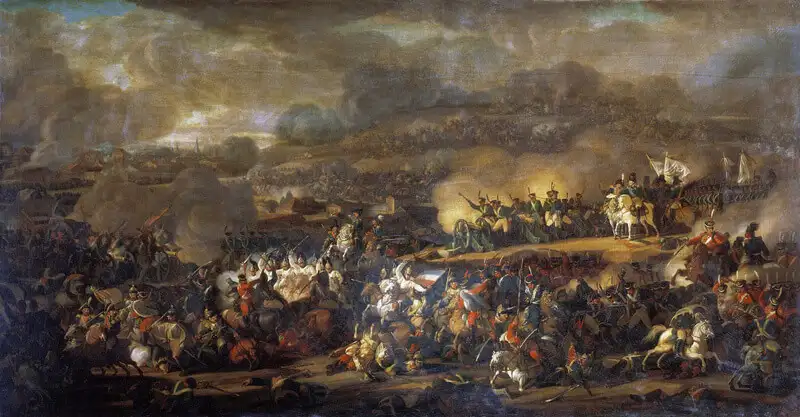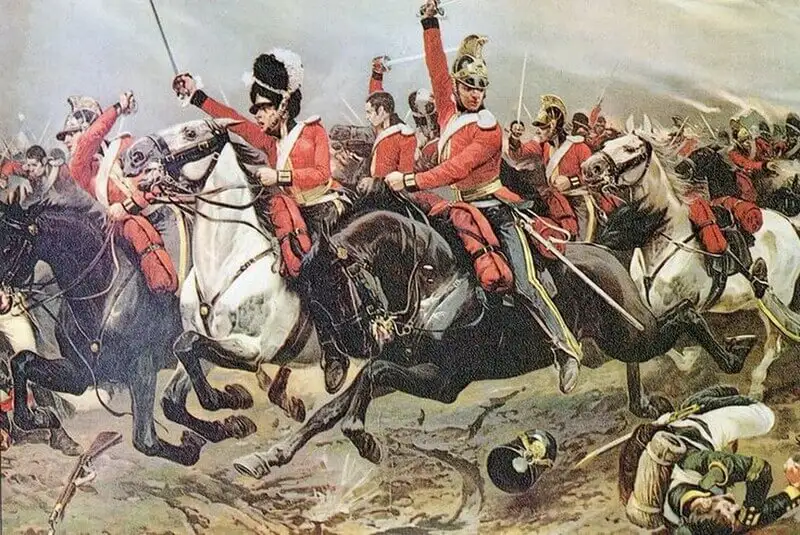The Battle of Waterloo, waged on June 18, 1815, in Belgium, signaled the ultimate downfall of Napoleon Bonaparte, concluding his reign and France’s dominance over Europe. Having conquered much of Western and Central Europe after declaring himself Emperor of France in 1804, Napoleon was defeated by British and Prussian forces under the command of the Duke of Wellington. In this article, Pywar aims to provide a detailed look at this historic battle, the lessons from Napoleon’s ambition and failure, and the legacy he left for humanity.
The Rise of Napoleon
Napoleon Bonaparte, born in 1769 on the Mediterranean island of Corsica, rapidly rose through the ranks of the French military, proving himself a talented and audacious leader.
After seizing political power in France through a coup in 1799, he was appointed “First Consul,” becoming the nation’s leading political figure.
In 1804, Napoleon crowned himself Emperor of France in an extravagant ceremony. Under his leadership, France engaged in a series of successful campaigns against European coalitions, expanding the French Empire across much of Western and Central Europe.

The Battle of Leipzig
In 1812, Napoleon launched a disastrous invasion of Russia, where his army was forced to retreat and suffered heavy losses. Meanwhile, Spanish and Portuguese forces, aided by the British, expelled Napoleon’s troops from the Iberian Peninsula during the Peninsular War (1808–1814).
In 1812, Napoleon launched a disastrous invasion of Russia, where his army was forced to retreat and suffered heavy losses. Meanwhile, Spanish and Portuguese forces, aided by the British, expelled Napoleon’s troops from the Iberian Peninsula during the Peninsular War (1808–1814).

Napoleon’s Abdication and Return
On April 6, 1814, at just over 40 years old, Napoleon was forced to abdicate, ending roughly 25 years of warfare. Under the Treaty of Fontainebleau, he was exiled to Elba, a Mediterranean island off the coast of Italy.
Less than a year later, on February 26, 1815, Napoleon escaped Elba and, with over 1,000 supporters, sailed back to mainland France. On March 20, he returned to Paris, greeted by jubilant crowds.
The newly installed king, Louis XVIII, fled, and Napoleon launched his 100-day campaign, often referred to as the “Hundred Days.”
Napoleon Marches to Belgium
Upon his return to France, a coalition of Austria, Britain, Prussia, and Russia, viewing Napoleon as an enemy, began preparing for war. Napoleon assembled a new army and planned a preemptive strike, aiming to defeat each allied force individually before they could unite against him.
In June 1815, Napoleon’s army marched into Belgium, where British and Prussian troops were stationed separately. Rallying his soldiers, Napoleon declared, “For every courageous Frenchman, the moment has come to conquer or perish!”
At the Battle of Ligny on June 16, Napoleon used superior artillery to defeat the Prussian army under Gebhard von Blücher. However, the French failed to completely destroy the Prussian forces, which quickly regrouped and withdrew to a position near the village of Waterloo, in present-day Belgium.

Arthur Wellesley, Duke of Wellington
Two days later, on June 18, 1815, Napoleon led his army of approximately 72,000 against a British force of 68,000, which had taken up a position near Waterloo, maintaining communication with their Prussian allies.
The British army, including Belgian, Dutch, and German troops, was commanded by Arthur Wellesley, Duke of Wellington, renowned for his victories against the French in the Peninsular War. A celebrated expert in defensive tactics, Wellington positioned his forces strategically along a ridgeline to gain an advantage in the upcoming battle.
The Battle of Waterloo Begins
In a critical misstep, Napoleon delayed his attack until midday, waiting for the ground to dry after heavy rain the previous night. This delay allowed Blücher’s Prussian remnants, estimated at over 30,000 troops, time to march to Waterloo and join the fight against the French that day.
Despite fierce French assaults, Wellington’s defensive position along the ridge enabled him to withstand Napoleon’s initial artillery barrages. By the afternoon, with the arrival of Blücher’s Prussian forces, the tide turned decisively in favor of the Allies.
By evening, both sides had suffered heavy casualties. Napoleon launched a final assault on Wellington’s position with his elite Imperial Guard. However, British guards and light infantry repelled the advance, causing the outnumbered French forces to retreat in disarray.
Prussian cavalry pursued and attacked the fleeing French throughout the night. Estimates suggest the French suffered around 40,000 casualties (killed, wounded, or captured), while the British and Prussians incurred approximately 22,000. About 10,800 soldiers died at Waterloo, the majority French.
Reportedly exhausted and in poor health during the Belgian campaign, Napoleon made tactical errors and displayed indecision. He also faced criticism for appointing incompetent commanders who failed to coordinate or communicate effectively during the battle.
Ultimately, the Battle of Waterloo marked the end of Napoleon’s illustrious military career. It is said he left the battlefield in tears.
Though victorious, the Duke of Wellington later expressed anguish over the cost of triumph: “My heart is broken by the terrible loss I have sustained in my dear friends, old comrades, and poor soldiers. Believe me, nothing is as sad as a battle lost, except a battle won.”
Wellington later became British Prime Minister, while Blücher, aged 70 during Waterloo, passed away a few years later.

Did You Know? Today, the phrase “to meet one’s Waterloo” is used to describe someone facing a final, decisive defeat.
Napoleon’s Final Years
After the catastrophic defeat at Waterloo, France’s dream of European domination collapsed, as did Napoleon’s leadership. Just days after his humiliating loss at Waterloo, on June 22, 1815, Napoleon abdicated the French throne once more.
In October of that year, he was exiled to Saint Helena, a remote British-controlled island in the South Atlantic. Napoleon died there on May 5, 1821, at age 51, likely of stomach cancer.
Initially buried on the island, his remains were returned to France in 1840 and interred in a crypt at Les Invalides, a military complex in Paris, alongside other renowned French military leaders.
Conclusion
Pywar hopes this article has deepened your understanding of the Battle of Waterloo, a historical milestone that ended Napoleon’s reign. The battle not only dashed France’s aspirations of European dominance but also left profound lessons about war, ambition, and the costs of both victory and defeat. Napoleon and his legacy remain etched in human history. Join us as we continue exploring more about world war history.
Translated by: Le Tuan
Source: History.com – Battle of Waterloo



